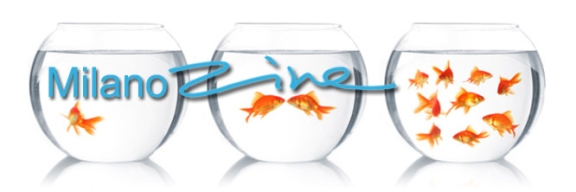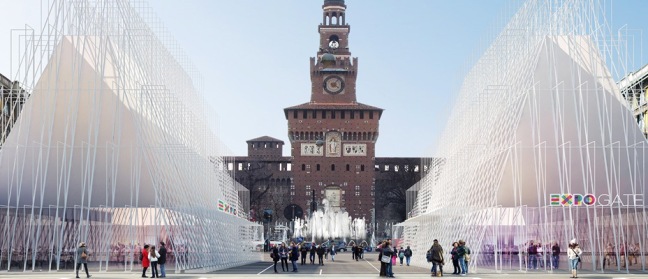One of the most frequently-asked question you’re asked before you leave for your study abroad program is, “So, why did you choose that particular country to study abroad?” Your response is usually, “Well, that university had just the right program for my academic interests, it was the perfect fit! And I’ll be able to study exactly what I’m interested in and get the experience I need for my future studies and career.”
But we all know the truth: your decision to study in Italy was probably based in part on reasons other than your education! You’re aware that you won’t be spending the whole time in the classroom. And there are lots of aspects to living in a foreign country that you thought about before deciding which place was right for you.
These are the top 20 reasons to study abroad in Italy, the allure of the bel paese:
Lifestyle
1. Italy is famous for la dolce vita: that means making the most of the little things in life, not sweating the “small stuff” and just enjoying yourself!
2. You love the sound of the melodic Italian language. Living and studying in Italy means you’ll be hearing the dulcet tones of the language every day.
3. You’ve always been curious why Italian people are always using their hands when they talk and you want to find out what all those different hand gestures mean.
 4. And you don’t really know the rules of cheek kissing: is it one kiss or two? Or three? When you meet someone, when saying good-bye? Part of your informal education in Italy will include the art of the friendly kiss!
4. And you don’t really know the rules of cheek kissing: is it one kiss or two? Or three? When you meet someone, when saying good-bye? Part of your informal education in Italy will include the art of the friendly kiss!
5. The cool confidence of the country’s soccer players was palpable at this year’s World Cup (even if the Azzurri team didn’t get very far in the championship!). And if you’re a fan of the game, the culture surrounding calcio in Italy is pretty serious. There are so many the great teams in the Serie A league to cheer for: Milan, Inter, Roma, Lazio, Juventus, Fiorentina…
6. Small city cars and scooters are all over Italy! Vespas, Ape Piaggios, Fiat 500s, Minis, Smarts… And the vintage models are the best! Why not take a drive when you’re studying abroad?
7. Not to mention all the super-sleek and fast sports cars. Italy is home to Ferrari, Lamborghini, Maserati, Alfa Romeo, Abarth and Ducati motorcycles.
8. You might have gotten a taste of Italy from classic neorealist cinema: think a young Sophia Loren in black and white. You need to find out if that version of the country still exists somewhere.
9. And you know that Italy is famous for amazing fashion and design. Even if you don’t go to any fashion shows or the annual Salone del Mobile in Milano, you can still soak in the easy but fabulous style of the Italians around you.
 Travel
Travel
10. The weather: most of the country has a nice, mild Mediterranean climate, not too cold in the winter and not too hot in the summer. When it is cold, skiing is usually an option. And when it is hot, the beach is usually only a short trip away!
11. Lots of famous art and culture from the Renaissance was produced right here in Italy. That means the museums all over the country are bursting with masterpieces!
12. Venice, Florence, Rome, Naples, Sicily… There are so many tourist destinations, it’s hard to choose where to start!
13. With 7,600km of coastline, Italy has been ranked the 14th country in the world for length of coastline. And much of that is covered in beautiful beaches, perfect for people watching, getting a great tan and swimming in the Mediterranean. You have to experience it for yourself.
Food and Drink
14. Italy is serious about its pasta. And each of the scores of shapes has a specific traditional sauce to go with it. You need to learn more about all those recipes and especially how they taste!
15. Italy’s famous for so many delicious delicacies: tiramisù, varied pastries, as well as so many kinds of cheese, prosciutto, truffles, olive oil…
16. Lots of Italians take part in the pre-dinner ritual of taking a moment to relax over drinks with friends, usually with a snack or maybe a buffet. When you’re studying abroad, you have to learn more about the Italian tradition of the aperitivo! Try a Negroni, a Bellini, a Spritz, or just a beer, a glass of wine or a soft drink.
 17. Espresso! And of course caffè macchiato, latte macchiato, caffè lungo, caffè corretto, cappuccino, marocchino, orzo in tazza grande, cioccolata, decaffeinato, however you like it!
17. Espresso! And of course caffè macchiato, latte macchiato, caffè lungo, caffè corretto, cappuccino, marocchino, orzo in tazza grande, cioccolata, decaffeinato, however you like it!
18. Because what better way to learn about wine varietals, vintages, aromas and tastes than a Tuscan vineyard? Wine is produced just about everywhere in Italy and each region has its own specialty.
19. Italy invented possibly one of the most perfect foods in the world: pizza! While you’re studying abroad here, you can visit Naples and try the original pizza margherita. Or just enjoy anything your local pizzeria serves up, it’s all wonderful!
20. Italy is also home to the best form of ice cream on the planet. Gelato is served in a variety of traditional and innovative flavors all across the peninsula. During your program you can take your time trying them all!
 Risotto alla zucca, serves 4
Risotto alla zucca, serves 4
 For Classical Music Lovers
For Classical Music Lovers For Video Game Nerds
For Video Game Nerds For Movie Buffs
For Movie Buffs For Fashionistas
For Fashionistas For Foodies
For Foodies October Bonus Event: For Wine Connoisseurs
October Bonus Event: For Wine Connoisseurs 

 Skip the ticket line and get tickets in advance
Skip the ticket line and get tickets in advance

 What is Carnevale?
What is Carnevale? Events in Milan
Events in Milan

 Videos will be on the
Videos will be on the  4. And you don’t really know the rules of cheek kissing: is it one kiss or two? Or three? When you meet someone, when saying good-bye? Part of your informal education in Italy will include the art of the friendly kiss!
4. And you don’t really know the rules of cheek kissing: is it one kiss or two? Or three? When you meet someone, when saying good-bye? Part of your informal education in Italy will include the art of the friendly kiss! Travel
Travel 17. Espresso! And of course caffè macchiato, latte macchiato, caffè lungo, caffè corretto, cappuccino, marocchino, orzo in tazza grande, cioccolata, decaffeinato, however you like it!
17. Espresso! And of course caffè macchiato, latte macchiato, caffè lungo, caffè corretto, cappuccino, marocchino, orzo in tazza grande, cioccolata, decaffeinato, however you like it!